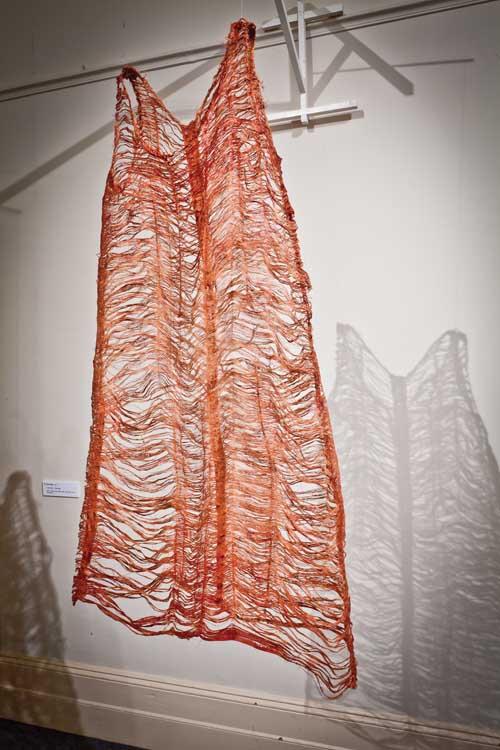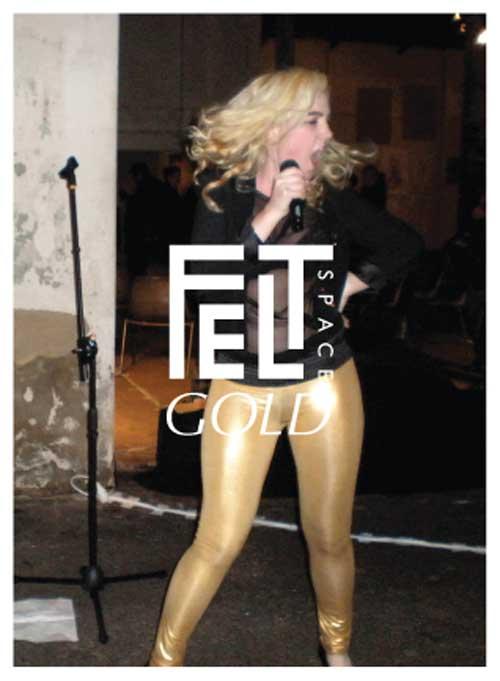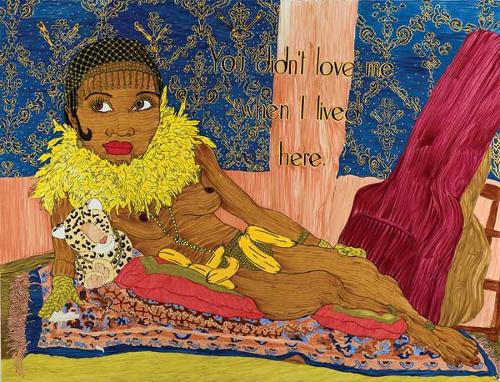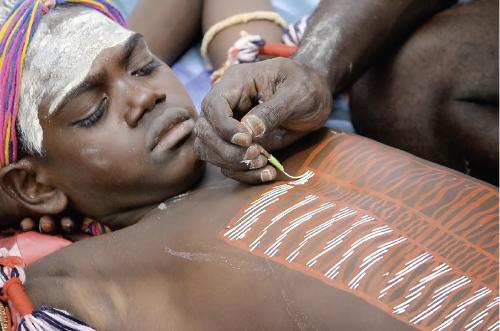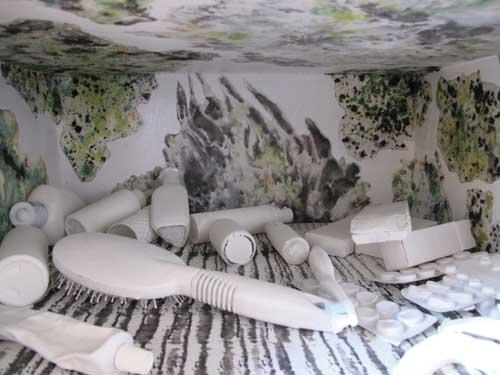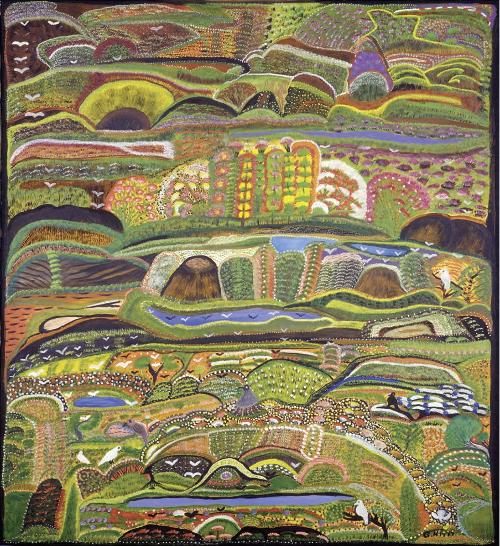
As a voluntary island dweller, I have long suspected that we are drawn to islands by their finitude, by the comforting possibility of their being encompassed by our own understanding. Yet, we are also drawn to islands by their utopian and frightening otherness. Dis-covery, curated by Dr Colin Langridge for the Salamanca Arts Centre as part of Tasmania's biennial arts and culture festival, Ten Days on the Island, gently questions these positions. The theoretical and geographic scope of Dis-covery is ambitious, as is the diversity of practices and media it encompasses; works by Tasmanian-based artists Diane Alison, Raymond Arnold, Amanda Shone; New Zealand-based artists Serena Giovanna Stevenson, Samuel Tupou, Shigeyuki Kihara and Tony Whincup; Sanja Pahoki (Melbourne); Brian Robinson (Torres Strait Islands/ Cairns); Lindsay Seers (United Kingdom) and Tim Silver (Sydney), range through installation, film, printmaking, sculpture, photography and painting.
The veil of romanticism that has for centuries coloured our understanding of islands as intrinsically exotic places of escape from the continental and the transcontinental mundane, is the lens through which Langridge brings this heterogenous collation together. Tony Whincup is New Zealand based but has a long association with the Kiribati Islands. In his series of photographic prints, World of Water, The atolls of Kiribati, the expanse of sky and water meet at the thin white line of low-lying land; the only disruption to this sublime abstraction are the I-Kiribati people, at once romantic in their tropical island home and manifestly threatened by the forces of climate change.
Pacific atolls also appear in Samuel Tupou’s seductively bright silkscreen print, Bikini kill, kill, kill; an image that elides nuclear testing and the naïve appropriation of Pacific culture in the 1950s 'tiki craze’ seen in the background patterns and the figure protected from a mushroom cloud by his Hawaiian shirt and a pair of 3D glasses. The intricate patterns of Pacific art surface in several other works, notably in Brian Robinson’s elegant linocuts, in which an iconography of everyday islander life and myth is embedded in dense decorative patterning that draws upon traditional Torres Strait Islander forms. The contemporary practice of traditional Maori tattooing is intimately explored in the film Face Value by Serena Giovanna Stevenson. Eschewing anthropological approaches, the tattooists and their clients speak for themselves of their personal motivations for undertaking this long and painful journey.
Lindsay Seers’ Tin Tabernacle installation consists of a corrugated iron structure that she erected and documented at incongruous locations in Tasmania’s sparsely populated West. Viewers enter the low-walled structure to view a complex, layered collage of projected images and spoken narratives that incorporate the dislocated tabernacle itself. Through its dislocation the building acts a metaphor for the fracturing and transposition of things, places and culture in a colonial and post-colonial globalised world. The carefully layered narrative weaves the artist’s personal history, her experience in Tasmania and local histories, connecting seemingly disparate phenomena across time and space.
Amanda Shone’s Week Magique installation examines the phenomenon of cruise tourism in the Pacific. Her unglamorous photographic record of shipboard life recalls travel industry advertising imagery. Reinforced by her partial recreation of a ship interior the ship is seen as an alien artefact - itself an island – the view from which is always mediated from the deck, the porthole or through careful constructions of ‘traditional’ ceremonies. The only non-figurative work in the exhibition, Dianne Alison’s installations of red and white medicine capsules, questions the notion of the self-contained individual. For her the experience of grief and medical intervention are reminders of the vulnerability and permeability of the self and body and, perhaps, of all islands.
The breadth of practices and places represented in Dis-covery prevent the exhibition from cohering neatly and Langridge’s thematic comes close to falling apart. This perhaps is in the very nature of islands, contained by the flux of the oceans and yet rendered permeable and interconnected by them.
Dis-covery is touring: Devonport Regional Gallery, Tasmania, 21 May - 19 June 2011; Goulburn Regional Gallery, NSW, 23 July - 27 August 2011; Tamworth Regional Gallery, NSW, 13 March - 13 April 2013.

